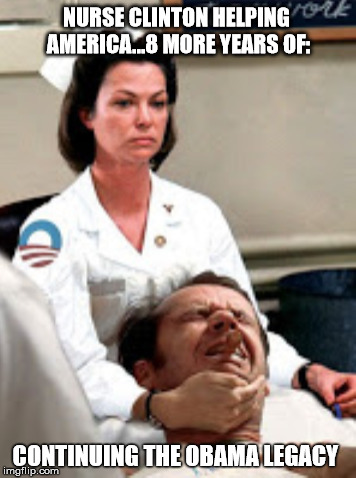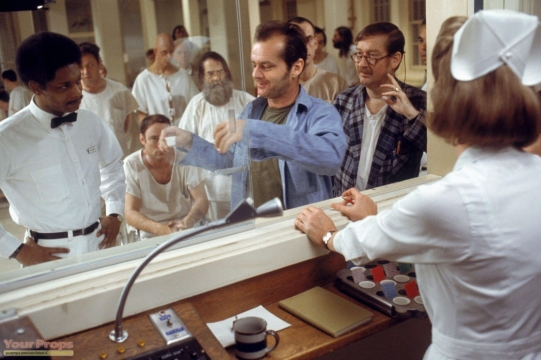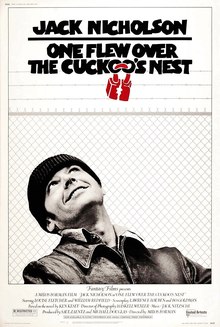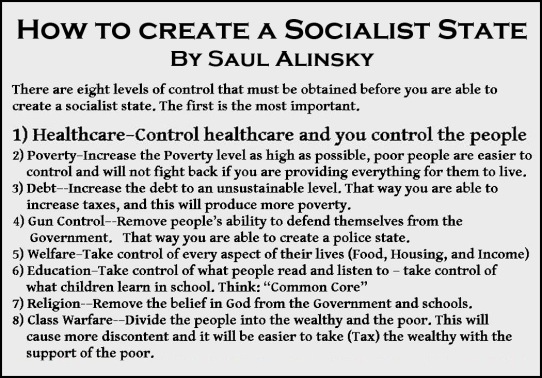Cato Institute
 |
| Founder(s) |
Ed Crane, Charles Koch, Murray Rothbard |
| Established |
1974[1] |
| Mission |
To originate, disseminate, and increase understanding of public policies based on the principles of individual liberty, limited government, free markets, and peace.[2] |
| Focus |
Public advocacy, media exposure and societal influence |
| President |
(and CEO) Peter N. Goettler[3] |
| Chairman |
Robert A. Levy[3] |
| Executive Vice-President |
David Boaz[4] |
| Faculty |
46 |
| Adjunct faculty |
70 |
| Staff |
100 |
| Budget |
Revenue: $37.3 million
Expenses: $29.4 million
(FYE March 2015)[5] |
| Slogan |
“Individual Liberty, Free Markets, and Peace” |
| Formerly called |
Charles Koch Foundation; Cato Foundation |
| Location |
1000 Massachusetts Ave. N.W.Washington, D.C., United States |
| Coordinates |
 38°54′12″N 77°01′35″WCoordinates: 38°54′12″N 77°01′35″WCoordinates:  38°54′12″N 77°01′35″W 38°54′12″N 77°01′35″W |
| Website |
www.cato.org |
The Cato Institute is an American libertarian think tank headquartered in Washington, D.C. It was founded as the Charles Koch Foundation in 1974 by Ed Crane, Murray Rothbard, and Charles Koch,[6] chairman of the board and chief executive officer of the conglomerate Koch Industries.[nb 1] In July 1976, the name was changed to the Cato Institute.[6][7] Cato was established to have a focus on public advocacy, media exposure and societal influence.[8] According to the 2014 Global Go To Think TankIndex Report (Think Tanks and Civil Societies Program, University of Pennsylvania), Cato is number 16 in the “Top Think Tanks Worldwide” and number 8 in the “Top Think Tanks in the United States”.[9] Cato also topped the 2014 list of the budget-adjusted ranking of international development think tanks.[10]

Cato Institute building in Washington, D.C.
History
The institute was founded in December 1974 in Wichita, Kansas as the Charles Koch Foundation and initially funded by Charles Koch.[nb 2][11] The other members of the first board of directors included co-founder Murray Rothbard, libertarian scholar Earl Ravenal, and businessmen Sam H. Husbands Jr. and David H. Padden.[6][12]At the suggestion of Rothbard,[12] the institute changed its name in 1976 to Cato Institute after Cato’s Letters, a series of British essays penned in the early 18th century by John Trenchard and Thomas Gordon.[13][14]
Cato relocated first to San Francisco, California in 1977, then to Washington, D.C. in 1981, settling initially in a historic house on Capitol Hill.[15](p446) The Institute moved to its current location on Massachusetts Avenue in 1993. Cato Institute was named the fifth-ranked think tank in the world for 2009 in a study of think tanks by James G. McGann, PhD of the University of Pennsylvania, based on a criterion of excellence in “producing rigorous and relevant research, publications and programs in one or more substantive areas of research”.[16]
Activities
Various Cato programs were favorably ranked in a survey published by the University of Pennsylvania in 2012.[9]
Publications
The Cato Institute publishes numerous policy studies, briefing papers, periodicals, and books. Peer-reviewed academic journals include the Cato Journal[17][18][19] and Regulation.[20][21][22] Other periodicals includeCato’s Letter,[23] Cato Supreme Court Review,[24] and Cato Policy Report.[25] Cato published Inquiry Magazine from 1977 to 1982 (before transferring it to the Libertarian Review Foundation)[26] and Literature of Liberty from 1978 to 1979 (before transferring it to the Institute for Humane Studies).[27]
Notable books from Cato and Cato scholars include:
Web projects
In addition to maintaining its own website in English and Spanish,[28] Cato maintains websites focused on particular topics:
- “Downsizing the Federal Government” contains essays on the size of the U.S. Federal Government and recommendations for decreasing various programs.[29]
- Libertarianism.org is a website focused on the theory and practice of libertarianism.
- Cato Unbound, a web-only publication that features a monthly open debate between four people. The conversation begins with one lead essay, followed by three response essays by separate people. After that, all four participants can write as many responses and counter-responses as they want for the duration of that month.
- PoliceMisconduct.net contains reports and stories from Cato’s National Police Misconduct Reporting Project and the National Police Misconduct News Feed.[30]
- Overlawyered is a law blog on the subject of tort reform run by author Walter Olson.
- HumanProgress.org is an interactive data web project that catalogs increases in prosperity driven by the free market.
Social media sponsored by Cato includes “Daily Podcasts” (through iTunes and RSS feeds), plus pages on Facebook, Twitter, Google+, and YouTube.[31]
Conferences
Speakers at Cato have included Federal Reserve Chairmen Alan Greenspan and Ben Bernanke, and International Monetary Fund Managing Director Rodrigo de Rato.[32][33][34] In 2009 Czech Republic PresidentVáclav Klaus spoke at a conference.[35]
Ideological relationships
Libertarianism, classical liberalism, and conservatism
Many Cato scholars advocate support for civil liberties, liberal immigration policies,[36] drug liberalization,[37] and the repeal of Don’t Ask Don’t Tell and laws restricting consensual sexual activity.[38][39] The Cato Institute officially resists being labeled as part of the conservative movement because “‘conservative’ smacks of an unwillingness to change, of a desire to preserve the status quo”.[40]
In 2006, Markos Moulitsas of the Daily Kos proposed the term “Libertarian Democrat” to describe his particular liberal position, suggesting that libertarians should be allies of the Democratic Party. Replying, Cato vice president for research Brink Lindsey agreed that libertarians and liberals should view each other as natural ideological allies,[41] and noted continuing differences between mainstream liberal views on economic policy and Cato’s “Jeffersonian philosophy“. Cato has stated on its “About Cato” page: “The Jeffersonian philosophy that animates Cato’s work has increasingly come to be called ‘libertarianism’ or ‘market liberalism.’ It combines an appreciation for entrepreneurship, the market process, and lower taxes with strict respect for civil liberties and skepticism about the benefits of both the welfare state and foreign military adventurism.”[42]
Cato scholars Gene Healy and Tim Lynch were critical of the expansion of executive power under President George W. Bush[43] and the Iraq War.[44] In 2006 and 2007, Cato published two books critical of the Republican Party’s perceived abandonment of the limited-government ideals that swept them into power in 1994.[45][46] For their part, only a minority of Republican congressmen supported President George W. Bush’s 2005 proposal to partially privatize Social Security, an idea strongly backed by the Institute. And in the 109th Congress, President Bush’s immigration plan – which was based on a proposal by Cato scholar Dan Griswold[47] – went down to defeat largely due to the eventual opposition of conservative Republican congressmen.[48]
Some Cato scholars disagree with conservatives on drug liberalization,[37] liberal immigration policy,[36] energy policy,[49] and LGBT rights[38] – including the repeal of Don’t Ask, Don’t Tell.[39] Former Cato President Ed Crane had a particular dislike for neoconservatism. In a 2003 article with Cato Chairman Emeritus William A. Niskanen, he called neoconservatism a “particular threat to liberty perhaps greater than the ideologically spent ideas of left-liberalism”.[50] In 1995, Crane wrote that neoconservatives “have a fundamentally benign view of the state”, which Crane considers antithetical to libertarian ideals of individual freedom.[51] In 2004, Cato’s foreign policy team criticized neoconservative foreign policy,[52] albeit the opposition to neo-conservative foreign policy has not always been uniform.[53]
Objectivism

John A. Allison IV speaking at the 2014 International Students for Liberty Conference (ISFLC)
The relationship between Cato and the Ayn Rand Institute (ARI) improved with the nomination of Cato’s new president John A. Allison IV in 2012. He is a former ARI board member and is reported to be an “ardent devotee” of Rand who has promoted reading her books to colleges nationwide.[54] In March 2015 Allison retired and was replaced by Peter Goettler. Allison remains on the Cato Institute’s board[55]
Cato positions on political issues and policies
The Cato Institute advocates policies that advance “individual liberty, limited government, free markets, and peace“. They are libertarian in their policy positions, typically advocating diminished government intervention in domestic, social, and economic policies and decreased military and political intervention worldwide. Cato was cited by columnist Ezra Klein as nonpartisan, saying that it is “the foremost advocate for small-government principles in American life” and it “advocates those principles when Democrats are in power, and when Republicans are in power”.[56] Eric Lichtblau called Cato “one of the country’s most widely cited research organizations”.[57]
On domestic issues
Cato scholars have consistently called for the privatization of many government services and institutions, including NASA, Social Security, the United States Postal Service, the Transportation Security Administration,public transportation systems, and public broadcasting.[58][59][60][61][62][63][64][65] The institute opposes minimum wage laws, saying that they violate the freedom of contract and thus private property rights, and increase unemployment.[66][67] It is opposed to expanding overtime regulations, arguing that it will benefit some employees in the short term, while costing jobs or lowering wages of others, and have no meaningful long-term impact.[68][69] It opposes child labor prohibitions.[70][71][72] It opposes public sector unions and supports right-to-work laws.[73][74] It opposes universal health care, arguing that it is harmful to patients and an intrusion onto individual liberty.[75][76] It is against affirmative action.[77] It has also called for total abolition of the welfare state, and has argued that it should be replaced with reduced business regulations to create more jobs, and argues that private charities are fully capable of replacing it.[78][79] Cato has also opposed antitrust laws.[80][81]
Cato is an opponent of campaign finance reform, arguing that government is the ultimate form of potential corruption and that such laws undermine democracy by undermining competitive elections. Cato also supports the repeal of the Federal Election Campaign Act.[82][83]
Cato has published strong criticisms of the 1998 settlement which many U.S. states signed with the tobacco industry.[84] In 2004, Cato scholar Daniel Griswold wrote in support of President George W. Bush’s failed proposal to grant temporary work visas to otherwise undocumented laborers which would have granted limited residency for the purpose of employment in the U.S.[85]
The Cato Institute published a study proposing a Balanced Budget Veto Amendment to the United States Constitution.[86]
In 2003, Cato filed an amicus brief in support of the Supreme Court’s decision in Lawrence v. Texas, which struck down the remaining state laws that made private, non-commercial homosexual relations between consenting adults illegal. Cato cited the 14th Amendment, among other things, as the source of their support for the ruling. The amicus brief was cited in Justice Kennedy’s majority opinion for the Court.[87]
In 2006, Cato published a Policy Analysis criticising the Federal Marriage Amendment as unnecessary, anti-federalist, and anti-democratic.[88] The amendment would have changed the United States Constitution to prohibit same-sex marriage; the amendment failed in both houses of Congress.
Cato scholars have been sharp critics of current U.S. drug policy and the perceived growing militarization of U.S. law enforcement.[89] Additionally, the Cato Institute opposes smoking bans[90] and mandatory use ofsafety belts.[91]
Criticism of corporate welfare
In 2004, the Institute published a paper arguing in favor of “drug re-importation”.[92] Cato has published numerous studies criticizing what it calls “corporate welfare”, the practice of public officials funneling taxpayer money, usually via targeted budgetary spending, to politically connected corporate interests.[93][94][95][96]
Cato president Ed Crane and Sierra Club executive director Carl Pope co-wrote a 2002 op-ed piece in the Washington Post calling for the abandonment of the Republican energy bill, arguing that it had become little more than a gravy train for Washington, D.C. lobbyists.[97] Again in 2005, Cato scholar Jerry Taylor teamed up with Daniel Becker of the Sierra Club to attack the Republican Energy Bill as a give-away to corporate interests.[98]
On copyright issues
A 2006 study criticized the Digital Millennium Copyright Act.[99]
On foreign policy
Cato’s non-interventionist foreign policy views, and strong support for civil liberties, have frequently led Cato scholars to criticize those in power, both Republican and Democratic. Cato scholars opposed PresidentGeorge H. W. Bush‘s 1991 Gulf War operations (a position which caused the organization to lose nearly $1 million in funding),[15](p454) President Bill Clinton‘s interventions in Haiti and Kosovo, and President George W. Bush’s 2003 invasion of Iraq. As a response to the September 11 attacks, Cato scholars supported the removal of al Qaeda and the Taliban regime from power, but are against an indefinite and open-ended military occupation of Afghanistan.[100]
Ted Galen Carpenter, Cato’s Vice President for Defense and Foreign Policy Studies, criticized many of the arguments offered to justify the 2003 invasion of Iraq. One of the war’s earliest critics, Carpenter wrote in January 2002: “Ousting Saddam would make Washington responsible for Iraq’s political future and entangle the United States in an endless nation-building mission beset by intractable problems.”[101] Carpenter also predicted: “Most notably there is the issue posed by two persistent regional secession movements: the Kurds in the north and the Shiites in the south.”[101] Cato’s Director of Foreign Policy Studies, Christopher Preble, argues in The Power Problem: How American Military Dominance Makes Us Less Safe, Less Prosperous, and Less Free, that America’s position as an unrivaled superpower tempts policymakers to constantly overreach and to redefine ever more broadly the “national interest”.[102]
Christopher Preble has said that the “scare campaign” to protect military spending from cuts under the Budget Control Act of 2011 has backfired.[103]
On environmental policy
Cato scholars have written about the issues of the environment, including global warming, environmental regulation, and energy policy.
PolitiFact.com and Scientific American have criticized Cato’s work on global warming.[104][105] A December 2003 Cato panel included Patrick Michaels, Robert Balling and John Christy.[citation needed] Michaels, Balling and Christy agreed that global warming is related at least some degree to human activity but that some scientists and the media have overstated the danger.[citation needed] The Cato Institute has also criticized political attempts to stop global warming as expensive and ineffective:
No known mechanism can stop global warming in the near term. International agreements, such as the Kyoto Protocol to the United Nations Framework Convention on Climate Change, would have no detectable effect on average temperature within any reasonable policy time frame (i.e., 50 years or so), even with full compliance.[106]
Cato scholars have been critical of the Bush administration’s views on energy policy. In 2003, Cato scholars Jerry Taylor and Peter Van Doren said the Republican Energy Bill was “hundreds of pages of corporate welfare, symbolic gestures, empty promises, and pork-barrel projects”.[107] They also spoke out against the former president’s calls for larger ethanol subsidies.[108]
With regard to the “Takings Clause” of the United States Constitution and environmental protection, libertarians associated with Cato contend that the Constitution is not adequate to guarantee the protection of private property rights.[109]
George W. Bush administration
Cato scholars were critical of George W. Bush‘s Republican administration (2001–2009) on several issues, including education,[110] and excessive government spending.[111] On other issues, they supported Bush administration initiatives, most notably health care,[112] Social Security,[113][114] global warming,[106] tax policy,[115] and immigration.[85][116][117][118]
During the 2008 U.S. presidential election, Cato scholars criticized both major-party candidates, John McCain and Barack Obama.[119][120]
Barack Obama administration
Cato has criticized President Obama’s stances on policy issues such as fiscal stimulus,[121] healthcare reform,[122] foreign policy,[123] and drug-related matters,[37] while supporting his stance on the repeal of Don’t Ask, Don’t Tell[39] and liberal immigration policy.[36]
Funding, tax status, and corporate structure
The Cato Institute is classified as a 501(c)(3) organization under U.S. Internal Revenue Code. For revenue, the Institute is largely dependent on private contributions. The Cato Institute reported fiscal year 2015 revenue of $37.3 million and expenses of $29.4 million.[5] According to the organization’s annual report, $32.1 million came from individual donors, $2.9 million came from foundations, $1.2 million came from program revenue and other income, and $1 million came from corporations.[5]
Sponsors of Cato have included FedEx, Google, CME Group and Whole Foods Market.[124] The Nation reported support for Cato from the tobacco industry in a 2012 story.[125]
Funding details
| Funding details as of FYE March 2015:[5] |
Operating Revenue as of FYE March 2015: $37,319,000
Individuals (86.0%)
Foundations (7.7%)
Corporations (2.9%)
Program revenue (2.9%)
Other income (0.5%)
|
Operating expenses as of FYE March 2015: $29,352,000
Program (73.8%)
Management & General (7.9%)
Development (18.3%)
|
Net assets as of FYE March 2015: $70,186,000.
Shareholder dispute
According to an agreement signed in 1977, there were to be four shareholders of the Cato Institute. They were Charles and David Koch, Ed Crane,[126] and William A. Niskanen. Niskanen died in October 2011.[127] In March 2012, a dispute broke out over the ownership of Niskanen’s shares.[126][127] Charles and David Koch filed suit in Kansas, seeking to void his shareholder seat. The Kochs argued that Niskanen’s shares should first be offered to the board of the Institute, and then to the remaining shareholders.[128] Crane contended that Niskanen’s share belonged to his widow, Kathryn Washburn, and that the move by the Kochs was an attempt to turn Cato into “some sort of auxiliary for the G.O.P…. It’s detrimental to Cato, it’s detrimental to Koch Industries, it’s detrimental to the libertarian movement.”[57]
In June 2012, Cato announced an agreement in principle to settle the dispute by changing the institute’s governing structure. Under the agreement, a board replaced the shareholders and Crane, who at the time was also Chief Executive Officer, retired. Former BB&T bank CEO John A. Allison IV replaced him.[129][130] The Koch brothers agreed to drop two lawsuits.[131]
Associates in the news
- Cato senior fellow Robert A. Levy personally funded the plaintiffs’ successful Supreme Court challenge to the District of Columbia’s gun ban (District of Columbia v. Heller), on the basis of the Second Amendment.[132]
- In January 2008, Dom Armentano wrote an op-ed piece about UFOs and classified government data in the Vero Beach Press-Journal.[133] Cato Executive Vice President David Boaz wrote that “I won’t deny that this latest op-ed played a role in our decision…” to drop Armentano as a Cato adjunct scholar.[134]
Nobel laureates at Cato
The following Nobel Memorial Prize in Economic Sciences laureates have worked with Cato:[135]
Milton Friedman Prize
Since 2002, the Cato Institute has awarded the Milton Friedman Prize for Advancing Liberty every two years to “an individual who has made a significant contribution to advancing human freedom.”[136] The prize comes with a cash award of US$250,000.[137]
Board of directors
As of 2016:[3]
- John A. Allison IV, former President and CEO, Cato Institute; retired Chairman and CEO, BB&T
- K. Tucker Andersen, Director, Above All Advisors
- Carl Barney, Chairman, Center for Excellence in Higher Education
- Frank Bond, Executive Vice President, The Foundation Group LLC
- Richard Dennis, President, Dennis Trading Group
- Robert Gelfond, CEO and founder, MQS Management
- Peter N. Goettler, President and CEO, Cato Institute; former Managing Director, Barclays Capital
- Ethelmae C. Humphreys, Chair, Tamko Roofing Products, Inc.
- James M. Kilts, Partner, Centerview Capital Holdings; former CEO, The Gillette Company
- David Koch, Executive vice-president, Koch Industries, Inc.
- James M. Lapeyre, Jr., President, Laitram, LLC
- Robert A. Levy, Chairman, Cato Institute
- Preston Marshall, President/CEO, Rusk Capital Management
- Nancy Pfotenhauer, consultant, Washington, D.C.
- Lewis E. Randall, former Director, E-Trade Financial Corporation
- Howard Rich, Chairman, Americans for Limited Government
- Donald G. Smith, President, Donald Smith & Co.
- Nestor R. Weigand, Jr., Chairman and CEO, JP Weigand & Sons, Inc.
- Jeffrey S. Yass, Managing Director, Susquehana International Group, LLP
- Fred Young, former owner, Young Radiator Company
Notable Cato experts
Notable scholars associated with Cato include the following:[146]
Policy scholars
- Swaminathan Aiyar, Research Fellow, Center for Global Liberty and Prosperity
- Doug Bandow, Senior Fellow
- Jason Bedrick, Policy Analyst
- David Boaz, Executive Vice President
- Mark A. Calabria, Director of Financial Regulation Studies
- Edward H. Crane, Founder and President Emeritus
- Steve H. Hanke, Senior Fellow and Director, Troubled Currencies Project
- Gene Healy, Vice President
- Nat Hentoff, Senior Fellow
- Andrei Illarionov, Senior Fellow, Center for Global Liberty and Prosperity
- Brink Lindsey, Distinguished Senior Fellow, Center for the Study of Science
- Patrick J. Michaels, Director, Center for the Study of Science
- Jeffrey A. Miron, Senior Fellow
- Daniel J. Mitchell, Senior Fellow
- John Mueller, Senior Fellow
- Johan Norberg, Senior Fellow
- Alex Nowrasteh, Immigration Policy Analyst
- Walter Olson, Senior Fellow
- Randal O’Toole, Senior Fellow
- Tom G. Palmer, Senior Fellow and Director of Cato University
- Roger Pilon, Vice President for Legal Affairs
- José Piñera, Co-chairman, Project on Social Security Choice
- William Poole, Senior Fellow
- Alan Reynolds, Senior Fellow
- Nicholas Quinn Rosenkranz, Senior Fellow in Constitutional Studies
- Julian Sanchez, Senior Fellow
- Ian Vásquez, Director, Center for Global Liberty and Prosperity
Adjunct scholars
Fellows
- Radley Balko, Media Fellow
- Randy E. Barnett, Senior Fellow
- James M. Buchanan (1919–2013)
- Vladimir Bukovsky, Senior Fellow
- Tucker Carlson, Senior Fellow
- F. A. Hayek (1899–1992)
- Penn Jillette, H.L. Mencken Research Fellow
- Václav Klaus, Distinguished Senior Fellow
- Deepak Lal, Senior Fellow
- Christopher Layne, Visiting Fellow in Foreign Policy Studies
- P. J. O’Rourke, H.L. Mencken Research Fellow
- Jim Powell, Senior Fellow
- Richard W. Rahn, Senior Fellow
- George Selgin, Senior Fellow
- Vernon L. Smith, Senior Fellow
- Teller, H.L. Mencken Research Fellow
- Cathy Young, Media Fellow
Affiliations
The Cato Institute is an associate member of the State Policy Network, a U.S. national network of free-market oriented think tanks.[147][148]
See also]
Notes

























-large-picture.jpg)























 e
e
























